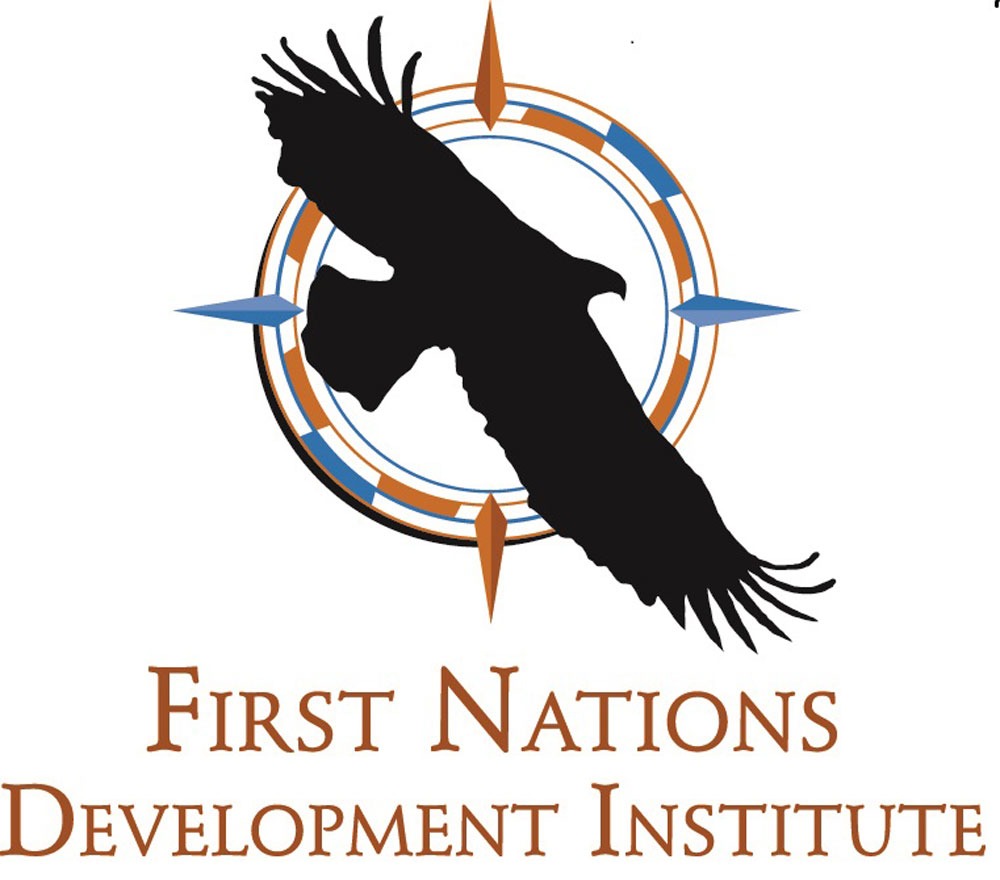
Click here to download this article as it appears in the magazine, with accompanying artwork.
Editors’ Note: This article comes from the Summer 2021 edition of the Nonprofit Quarterly, “The World We Want: In Search of New Economic Paradigms.” This article also marks the final entry in our six-article series with First Nations Development Institute (First Nations) on economic justice work in Indian Country.

How we tell stories matters. The storyteller. The timing. The word choice. The form the story takes. It all matters, because stories shape how we see the world and how we envision our role in its shaping.1
History is often told by the colonizer, yet that is only one perspective. And the story of our food, tied to so many other stories—of land, of war, of sovereignty and lack thereof, of agriculture, of water … of all the parts of who we are as people, as communities, as a nation—is rife with the myths, lies, and assumptions of the Europeans who colonized this land. In 2021, as we examine the events and stories of the past year, we need to reconsider, retell, and reinvent the stories told about our food systems, and understand how that storytelling has served to prop up these systems’ inherent injustices.
The Story
For far too long, the story of the American food system as it is told has begun with Squanto, “the Indians” feeding the newly arrived American Pilgrims, and Thanksgiving. These “Indians” were Wampanoag, who lived in the village of Pawtuxet, but we rarely hear their names.
Thus originated a story of food insecurity—with the settlers being food insecure and “the Indians” the providers—and from this story was birthed a “nation,” a holiday to commemorate the relationship between the founding of our country and the land to be renamed “America,” millions of pounds of turkey, and the idea that if America is in trouble, there will be some group of “Indians” to save it.
But the story of those events, of course, becomes very different when we hear from the Wampanoag people—who still exist, live in their homelands, and practice traditional food gathering, hunting, and fishing. The Wampanoag remain among us,2 despite attempts to erase their names from history in the Thanksgiving story; attempts to take their land base;3 and the constant barrage from federal, state, and local townships and their citizenry challenging their right to hunt, fish, and gather in their own homelands4—the same homelands that provided the illusory “first” feast.
The Wampanoag story covers a long period of interaction with Europeans that includes slavery, genocide, decimation by European-borne disease, and century-long (and counting) struggle.5 The storyteller and what information is omitted matter.
The traditional Thanksgiving story provided a mythical foundational depiction of relationship between peoples. It has been further leveraged as evidence of the righteousness and inevitability of colonization even today, despite the untruth of the whole story. Now that we have recognized the lie, we should use it as a lens through which to recognize the patterns of storytelling about American food, the environmental and economic systems that support that food system as it evolved to what it is today, and solutions to the food injustices these systems have perpetuated.
The Table is Set
Much like the mainstream version of Thanksgiving, the story of American food systems begins with a table already set, with food already prepared. Similarly, the story of agriculture and food systems begins with the idea of an American “pioneered” farm, row cropping, anthropocentrism, and the inevitability of long, technically driven supply chains. In the same vein, solutions to food insecurity are usually of the short-term, unsustainable kind, described as creating “efficiencies” in production or the supply chain, instead of recognizing the foundation of the supply chain itself as a problem.
The land as a living entity/ecosystem, stewardship of the land over long periods of time, systems of people and food management, life and growth cycles, preparations and processing, and accurate historical presentation are not part of the American food systems story as we are told it. In the Wampanoag version of the story, food storage caches, hunters’ knowledge of game counts and seasonal fowl, growers’ understanding of harvest seasons, yields, and excess that could be spared from winter storage play starring roles. More important, the Wampanoag story is rooted in empathic values—recounting, for example, gifts of food to those in need over long periods of time—despite the Wampanoag’s own need of sustenance for survival during hard winters. Time lines matter. The Thanksgiving story isn’t about one meal on one day in one community. The story encompasses an entire era of settler colonial and Indigenous relationships.
Resetting the Table
While we often think of ourselves as knowing better and doing better today, we see the same historical drama of food storytelling unfolding. Early in the COVID-19 pandemic, when much of the country was experiencing food shortages—and more vulnerable communities like Tribal Nations were experiencing extreme food shortages—there was a strong focus on moving food around within the supply chain (food is already on the table) quickly (time lines should be short and focused) for vulnerable communities (there is one perspective, one storyteller).
Food security in this context describes activities, policies, and actions, often external to the community meant to be served, to create food shipments for populations who are experiencing “caloric deficiencies.” This approach often results in more production, overproduction, and/or reallocation strategies—regardless of the capacity of land, farmers, or labor force—and, in times of emergency, cost. We hear this approach in conversations about “food deserts” that describe an absence of retail food availability, and thus focus on creating retail opportunities or moving surplus food to places without. Or we see this play out with approaches that focus on individual education and behavioral change rather than on the systems of production, wealth and land accumulation, and policies that create and support concentrated capital power in some communities while resources are extracted from others.
Sign up for our free newsletters
Subscribe to NPQ's newsletters to have our top stories delivered directly to your inbox.
By signing up, you agree to our privacy policy and terms of use, and to receive messages from NPQ and our partners.
Meanwhile, the overwhelming response of Tribal and Indigenous program services has been to focus on food sovereignty. Food sovereignty in this context describes the relationships among a person and their community, their identity, their traditional food structures, and their activities of gathering, hunting, and fishing—as well as a person’s or community’s relationship to policies for food grown, collected, hunted, gathered, or “shed for the purpose of feeding people within that community.
Countless communities reinstituted and redoubled efforts to rebuild or create community gardens and artisanal meat production;6 they also returned to traditional gathering, hunting, and fishing.7 We saw this when Tribes like the Oneida Nation used their own long-standing food system approaches that include buffalo herds and meat processing and logistical food planning to serve not only their own Tribal population but the entire Green Bay community.8 The Traditional Native American Farmers Association, located in Tesuque Pueblo, along with other Indigenous seed keepers and seed banks, sent traditional, Indigenous, heirloom seeds to communities labeled “food insecure.”9
Overwhelmingly, Tribal citizens like those in Cochiti and Kewa Pueblos or White Mountain Apache or Turtle Mountain or Standing Rock create their own networks of care. This includes checking on elders, feeding children, making supply runs, and reallocating existing supplies to meet their own community needs. Tribal Nations have existed and continue do so because we know how to care for one another and how to execute those care networks in our greatest moments of need. It is our way.
The Tribal response is the meaningful systemic change that will enable sovereignty, community, and environmental well-being. Adapting and adjusting existing food supply chains with an external response focus, no matter how transformative this may look at first glance, maintains dependence on a food system where Tribal communities are still only underserved consumers—if served at all. In contrast, a focus on food sovereignty strategies that incorporate identity, community action, Indigenous history, and cooperation activate skills that allow communities to respond and meet their own needs independently.
As COVID-19 continues to devastate Indian Country and as America continues to build COVID-19 recovery plans, there are takeaways. When we examine what passes as food security in this country, we find that the market-based system and accompanying solutions have inherent weaknesses: (1) the food supply chain can only reach as far as the dollars stretch, leaving communities without cash resources food insecure; and (2) food security is dependent on individual (or individual business) control and action. Yet it was community that created resiliency during COVID-19. It was community that responded to, cared for, and ensured that people were safe and fed, even in isolation, with existing resources available in their own community. That is food sovereignty.
***
To reexamine and retell the story of our American food system, we often must return to the beginning of the story and listen closely to the story being conveyed. In the case of Thanksgiving, we should be asking ourselves why we don’t hear the Wampanoag version of the same story—and follow up with actions to ensure that the Wampanoag version becomes commonplace.
It is through telling and listening and retelling the complete, uncensored stories of our human experience that we become empowered to change the patterns of how we order the world, all that supports us in the world, and who develops the narratives that become our collective “history.” In terms of our food system, if we limit our solutions to the existing structures, we are giving power to structures that depend on consumption—if not overconsumption—and pay little heed to the extractive, unsustainable, and unjust characteristics of these systems.
The table is not set. We can challenge and determine what we have at the table. When Tribal communities focus efforts on seed saving, community and local production and operations, intergenerational traditional food gathering and processing, community feeding programs, small and local artisanal meat processing, and locally controlled and networked food pantries, and when they bring their own Tribal laws to bear vis-à-vis their food systems and peoples, we are offering an alternative to the production and agricultural systems that have resulted in, among many other harms, ongoing food insecurity.
Legitimizing and retelling the unexpurgated food story—the story that includes the narrative of the land, the people, the natural resources, the relationships and ecosystems, the learning and management, instead of consumption only— opens up possibilities for solutions from unheard perspectives and results in dollars spent on these solutions in and with community rather than for communities.
And isn’t that a much better story?
Notes
- Robert J. Miller, “American Indian Influence on the United States Constitution and its Framers,” American Indian Law Review, vol. 18, no. 1 (1993).
- Anna Patterson, “Expanded funding for Indigenous businesses in the U.S.,” The Keyword (blog), November 23, 2020, blog.google/outreach-initiatives/google-org/expanded-funding-indigenous-business-owners/.
- Mashpee Wampanoag Tribe, News, “Mashpee Wampanoag Tribe Threatened with Land Disestablishment, Tribal Leaders Step in to Address Ongoing Land Issues and Threats to Sovereignty,” March 30, 2020, mashpeewampanoagtribe-nsn.gov/news/2020/3/30/mashpee-wampanoag-tribe-threatened-with-land-disestablishment-tribal-leaders-step-in-to-address-ongoing-land-issues -and-threats-to-sovereignty.
- Jessica Hill, “Wampanoag members fight to keep winter fishing traditions alive,” Cape Cod Times, March 4, 2021, www.capecodtimes.com/story/news/2021/03/04/wampanoag-people-fish-during-winter-lament-environmental-changes-indian-traditions/4554582001/.
- David Treuer, The Heartbeat of Wounded Knee: Native America from 1890 to the Present (New York: Riverhead Books, 2019).
- Covid-19 in Indian Country: A Call to Integrate Food Systems and Food Security toward Sovereignty (Colorado: First Nations Development Institute, not yet published).
- Ibid.
- Ibid.
- Ibid.










